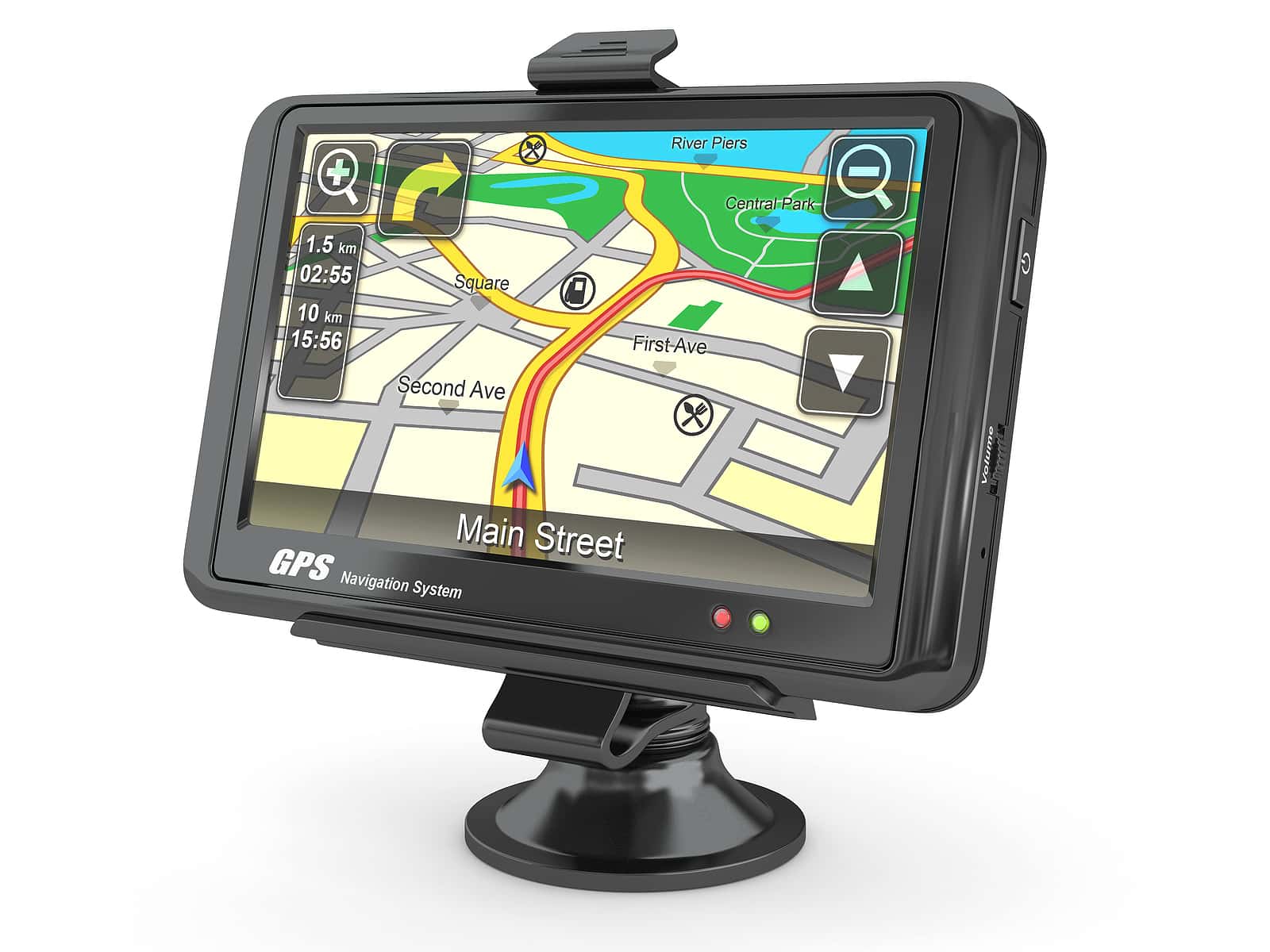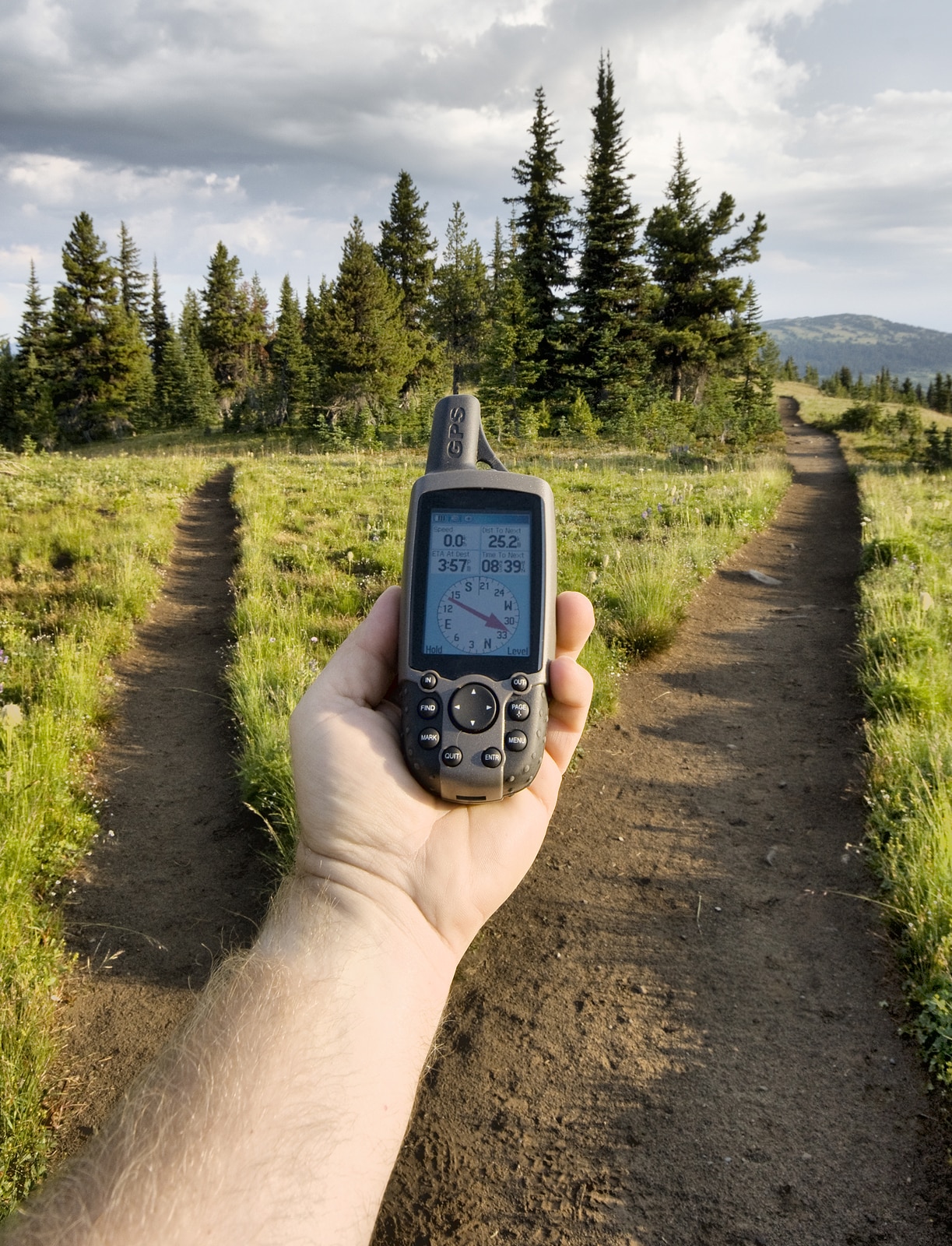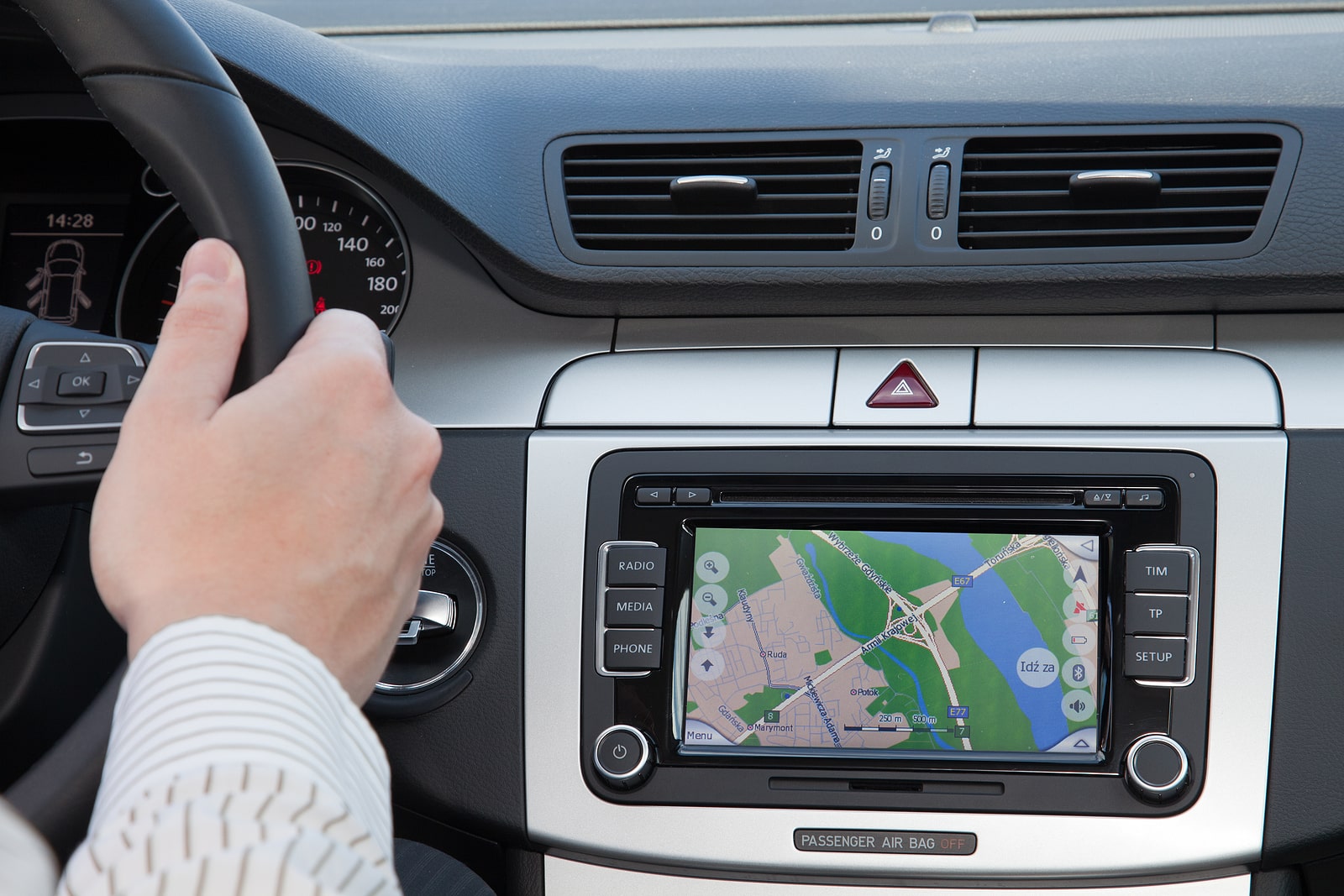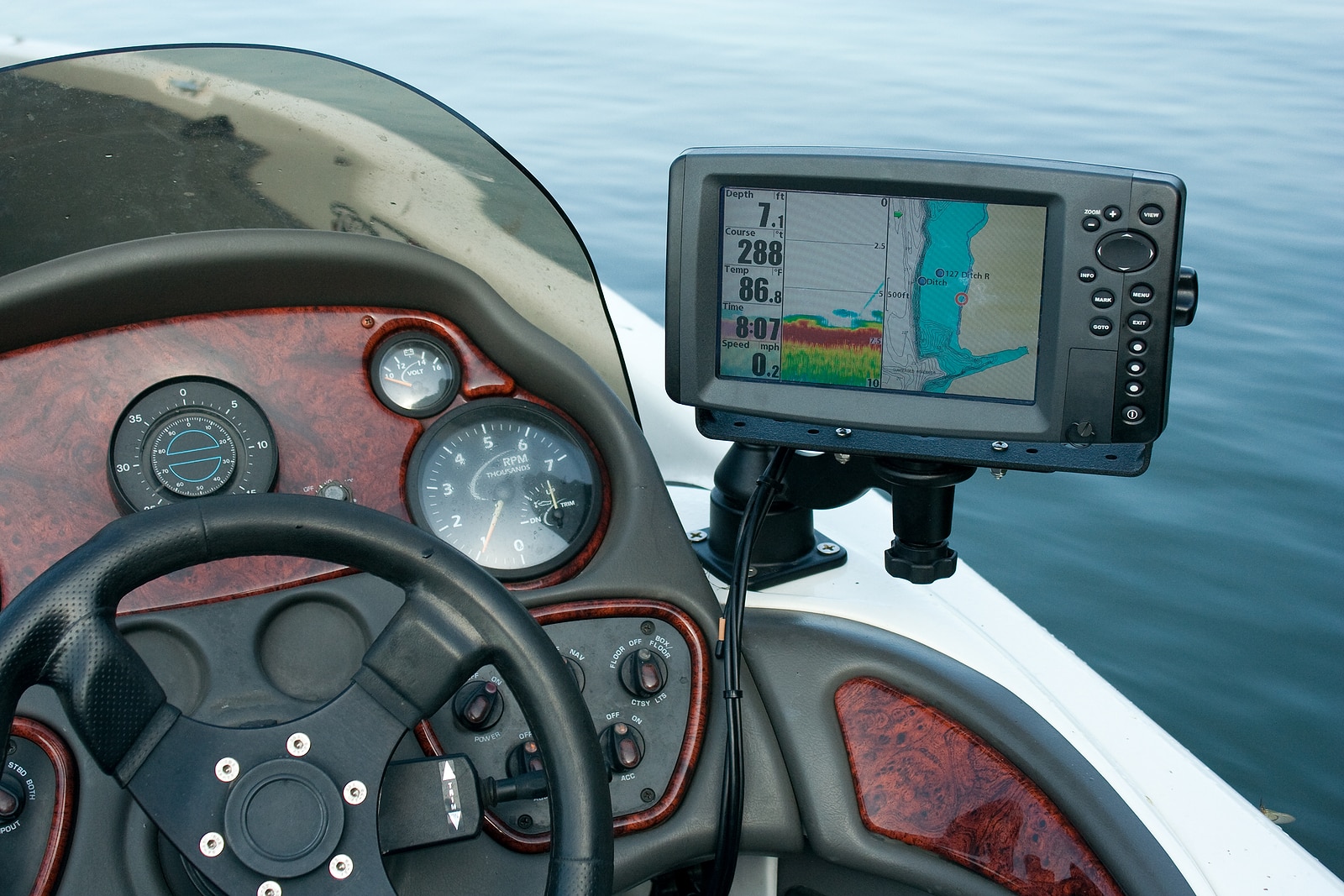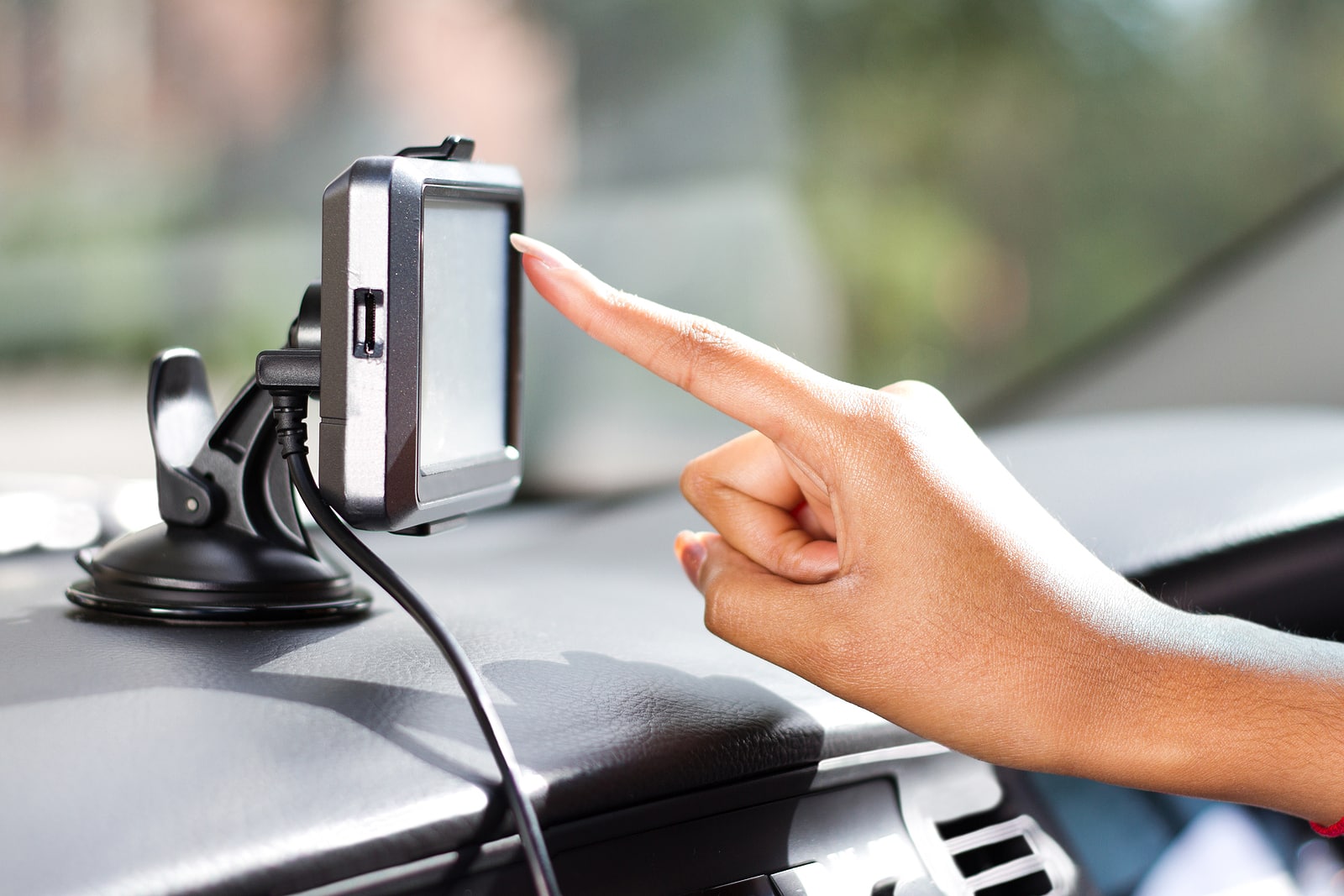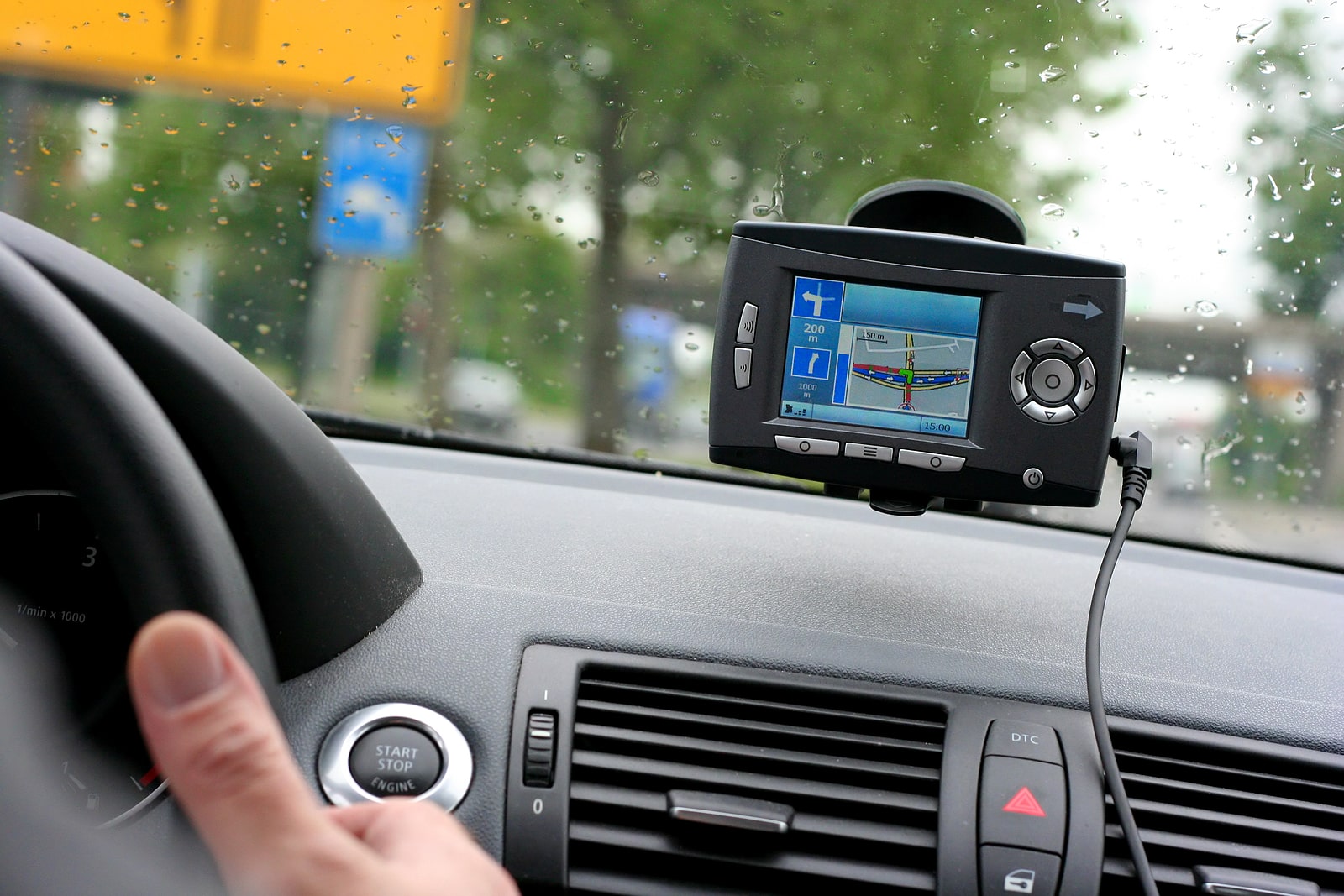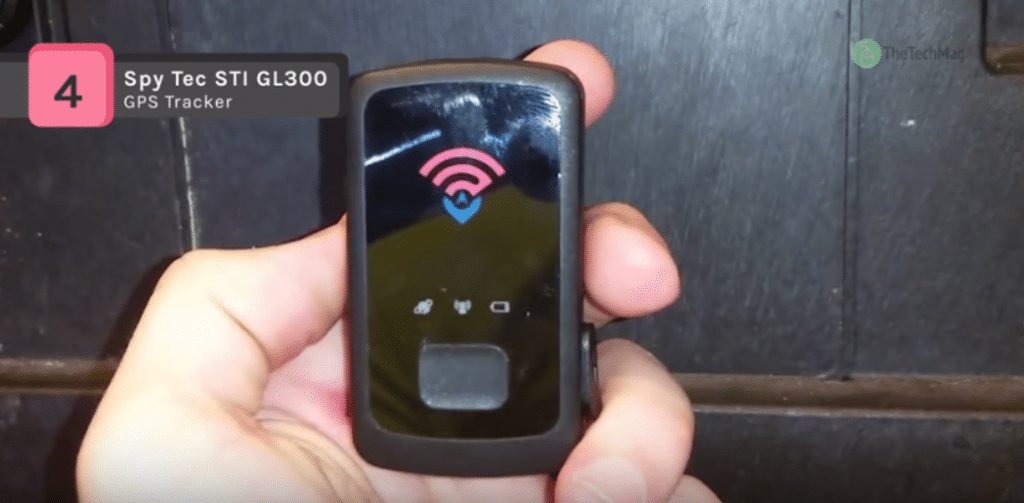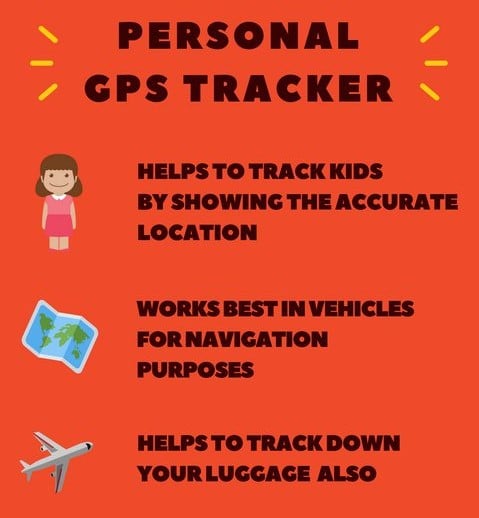Embarking on a journey, whether it’s a thrilling outdoor adventure, a road trip to a new destination, or simply navigating through bustling city streets, can be an exhilarating experience. However, ensuring that you reach your destination with ease and confidence requires the right navigation companion. This is where GPS devices come into play, serving as invaluable tools for providing accurate and reliable guidance.
In this comprehensive GPS buyers guide, we delve into the world of GPS devices, offering insights and recommendations to help individuals find the perfect navigation solution tailored to their specific needs. Whether you’re an avid hiker, a frequent traveler, or someone seeking seamless navigation in everyday life, understanding the intricacies of GPS devices is essential in making an informed decision.
The guide begins by emphasizing the significance of determining individual needs when it comes to selecting a GPS device. By identifying the primary use of the GPS, whether it’s for outdoor activities, driving, or everyday navigation, individuals can narrow down the features and capabilities required for an optimal experience.
We explore the various types of GPS devices available in the market, including handheld units, car navigation systems, and smartphone apps, each catering to different needs and preferences. Understanding the distinctions between these types is crucial in making an informed decision.
Mapping and navigation features, durability, battery life, satellite reception, and additional features such as altimeter, barometer, compass, and wireless connectivity are thoroughly discussed, providing a comprehensive understanding of the essential elements to consider when evaluating GPS devices.
Moreover, setting a budget, researching reputable brands, and considering user reviews and recommendations are highlighted as pivotal steps in the decision-making process. By carefully considering these factors, individuals can confidently choose a GPS device that aligns perfectly with their unique requirements.
Join us on this insightful journey as we navigate through the intricacies of GPS devices, ultimately helping you find the ideal navigation companion for your adventures and everyday travels.
Determining Specific Needs
Determining specific needs is the foundational step in the process of selecting the right GPS device. Understanding the intended use and individual requirements is crucial in narrowing down the features and capabilities that will best serve the user. Whether it’s for outdoor activities, driving, or everyday navigation, each scenario demands distinct functionalities from a GPS device.
Outdoor Enthusiasts:
For outdoor enthusiasts, a GPS device serves as a vital tool for navigating through rugged terrains, dense forests, and remote trails. When determining specific needs for outdoor activities, factors such as ruggedness, waterproofing, long battery life, and topographic mapping capabilities take precedence. Ruggedness ensures that the device can withstand the challenges of outdoor environments, including exposure to water, dust, and impact. Waterproofing provides added protection, especially during activities like hiking, camping, or mountaineering where exposure to water is inevitable. Long battery life is essential for extended outdoor adventures, ensuring that the GPS device remains operational throughout the journey. Topographic mapping capabilities enable users to view detailed terrain information, elevation changes, and points of interest, enhancing the overall outdoor navigation experience.
Driving and Everyday Navigation:
In the context of driving and everyday navigation, the specific needs for a GPS device are tailored to provide seamless and efficient guidance. Real-time traffic updates, lane guidance, voice-activated navigation, and large, easy-to-read displays are essential features to consider. Real-time traffic updates help drivers avoid congestion and plan efficient routes, while lane guidance assists in navigating complex intersections and highway junctions. Voice-activated navigation provides hands-free operation, allowing drivers to focus on the road while receiving turn-by-turn directions. Large, easy-to-read displays ensure clear visibility of maps and directions, enhancing the overall driving experience.
Versatility and Adaptability:
In scenarios where a GPS device is used for everyday navigation in urban environments, adaptability and versatility become key considerations. Smartphone apps for navigation offer the flexibility and convenience of using a GPS on a device that individuals already carry with them. However, the reliance on a data connection and the impact on a smartphone’s battery life are factors to consider when determining specific needs for everyday navigation.
Types of GPS Devices
When it comes to GPS devices, there are several types available, each catering to specific needs and preferences. Understanding the distinctions between these types is essential in making an informed decision about which GPS device best aligns with the intended use. The primary types of GPS devices include handheld units, car navigation systems, and smartphone apps, each offering unique features and functionalities.
Handheld GPS Units:
Handheld GPS units are designed for outdoor enthusiasts, hikers, campers, mountaineers, and adventurers who require reliable navigation in remote and challenging terrains. These devices are compact, portable, and rugged, making them suitable for outdoor activities. Handheld GPS units often come with features such as topographic mapping capabilities, long battery life, high-sensitivity receivers for better satellite reception, and additional tools like altimeter, barometer, and compass. The topographic mapping capabilities allow users to access detailed terrain information, elevation changes, and points of interest, providing valuable guidance in outdoor environments. The ruggedness of handheld GPS units ensures that they can withstand exposure to water, dust, and impact, making them ideal companions for outdoor adventures.
Car Navigation Systems:
Car navigation systems, also known as GPS navigation units, are designed specifically for use in vehicles. These devices offer turn-by-turn directions, real-time traffic updates, lane guidance, and large, easy-to-read displays, providing drivers with efficient and seamless navigation. Car navigation systems are mounted on the dashboard or windshield of the vehicle and offer features such as voice-activated navigation, integration with smartphone features, and the ability to update maps and software. Real-time traffic updates help drivers avoid congestion and plan efficient routes, while lane guidance assists in navigating complex intersections and highway junctions. The large, easy-to-read displays ensure clear visibility of maps and directions, enhancing the overall driving experience.
Smartphone Apps for Navigation:
Smartphone apps for navigation have become increasingly popular due to the widespread use of smartphones and their built-in GPS capabilities. These apps offer the flexibility and convenience of using a GPS on a device that individuals already carry with them. Smartphone apps provide real-time traffic updates, seamless integration with other apps, and the ability to access up-to-date maps. However, they may require a data connection, and the reliance on a smartphone’s battery life can be a consideration for longer journeys.
Understanding the specific features and functionalities of each type of GPS device is crucial in determining which option best suits the intended use. Whether it’s for outdoor adventures, driving, or everyday navigation, selecting the right type of GPS device is the first step in finding the perfect navigation companion.
Mapping and Navigation Features
Mapping and navigation features are fundamental aspects of GPS devices, playing a pivotal role in providing accurate and reliable guidance to users. Whether it’s for outdoor activities, driving, or everyday navigation, the mapping and navigation capabilities of a GPS device significantly impact the overall user experience.
Detailed Maps and Intuitive Interfaces:
One of the key features to look for in a GPS device is the availability of detailed maps and intuitive interfaces. High-quality maps with clear landmarks, points of interest, and accurate road networks are essential for effective navigation. Intuitive interfaces that offer easy access to navigation tools, route planning, and points of interest enhance the overall usability of the GPS device.
Turn-by-Turn Directions:
Turn-by-turn directions are a standard feature in GPS devices, providing users with step-by-step guidance to their destination. These directions include voice prompts, visual cues, and real-time updates, ensuring that users stay on the right path and reach their destination efficiently.
Points of Interest and Route Planning:
GPS devices often offer access to a wide range of points of interest, including restaurants, gas stations, landmarks, and attractions. The ability to plan routes based on specific points of interest and preferences adds a layer of customization to the navigation experience, allowing users to tailor their journeys to their individual needs.
Real-Time Traffic Updates:
For GPS devices used in driving scenarios, real-time traffic updates are a valuable feature. These updates provide information about traffic congestion, accidents, road closures, and alternative routes, allowing drivers to make informed decisions and avoid delays during their journeys.
Enhanced Mapping Capabilities:
Certain GPS devices offer enhanced mapping capabilities, such as topographic mapping for outdoor activities or 3D mapping for urban navigation. These advanced mapping features provide users with detailed terrain information, elevation changes, and a comprehensive view of their surroundings, enhancing the overall navigation experience.
Durability and Battery Life
Durability and battery life are critical considerations when evaluating GPS devices, particularly for outdoor enthusiasts and individuals engaging in extended activities where reliable navigation is essential. These factors play a significant role in ensuring that the GPS device can withstand the rigors of outdoor environments and remain operational throughout the duration of the journey.
Ruggedness and Environmental Resistance:
For outdoor activities such as hiking, camping, mountaineering, and geocaching, the ruggedness and environmental resistance of a GPS device are paramount. Rugged construction ensures that the device can withstand impact, vibration, and exposure to the elements, including water, dust, and extreme temperatures. Waterproofing is particularly crucial, as it protects the device from moisture and allows it to function in wet conditions, making it an indispensable feature for outdoor enthusiasts.
Long Battery Life:
Extended battery life is essential for outdoor activities that span over prolonged periods. A GPS device with a long-lasting battery ensures that users can rely on continuous navigation support without the need for frequent recharging or battery replacements. This feature is particularly valuable for individuals embarking on multi-day hikes, backpacking trips, or expeditions where access to power sources may be limited.
Power-Saving Features:
Some GPS devices are equipped with power-saving features that optimize battery usage without compromising essential navigation functionalities. These features may include adjustable screen brightness, power management settings, and the ability to conserve power during periods of inactivity. By efficiently managing power consumption, these devices extend battery life and provide users with peace of mind during prolonged outdoor excursions.
Impact on User Experience:
The durability and battery life of a GPS device directly impact the user experience, especially in challenging outdoor environments. A rugged and long-lasting device instills confidence in users, allowing them to navigate with assurance and reliability, irrespective of the environmental conditions they encounter.
Satellite Reception and Accuracy
Satellite reception and accuracy are pivotal factors that significantly influence the performance and reliability of GPS devices. The quality of satellite reception directly impacts the accuracy of navigation, especially in challenging environments where obstructed views of the sky can pose obstacles to signal acquisition.
High-Sensitivity Receivers:
GPS devices equipped with high-sensitivity receivers are capable of acquiring and tracking satellite signals more effectively, even in environments with limited visibility of the sky, such as dense forests, urban canyons, or deep valleys. These receivers enhance the device’s ability to maintain a strong and consistent satellite lock, contributing to improved accuracy and reliability of location data.
Support for Multiple Satellite Systems:
The inclusion of support for multiple satellite systems, such as GPS, GLONASS, Galileo, and BeiDou, enhances the coverage and accuracy of GPS devices. By leveraging signals from multiple satellite constellations, these devices can provide more precise positioning information, especially in areas where signals from a single satellite system may be obstructed or unavailable.
Challenging Environments and Signal Acquisition:
In challenging environments, such as dense urban areas or mountainous regions, the ability of a GPS device to acquire and maintain satellite signals becomes crucial. High-quality satellite reception ensures that the device can accurately determine the user’s position, track movement, and provide reliable navigation guidance, even in areas with limited satellite visibility.
Impact on Navigation Performance:
The accuracy of satellite reception directly impacts the overall navigation performance of GPS devices. Devices with superior satellite reception capabilities can deliver more precise location information, resulting in accurate mapping, reliable turn-by-turn directions, and enhanced user confidence during navigation.
Consideration for Outdoor Activities:
For outdoor enthusiasts and individuals engaging in activities such as hiking, geocaching, or off-road exploration, reliable satellite reception is indispensable. It ensures that the GPS device can provide accurate positioning information, track routes, and guide users through challenging terrains with confidence and precision.
Additional Features to Consider
When selecting a GPS device, considering additional features beyond basic navigation capabilities can greatly enhance the overall functionality and utility of the device. These additional features cater to specific needs and preferences, providing users with valuable tools and information to complement their navigation experience.
Altimeter and Barometer:
GPS devices equipped with altimeter and barometer functions offer valuable insights into changes in elevation and atmospheric pressure. These features are particularly beneficial for outdoor enthusiasts, hikers, and mountaineers, allowing them to monitor altitude changes, track weather patterns, and make informed decisions based on environmental conditions.
Compass:
The inclusion of a compass in a GPS device provides users with a reliable orientation tool, especially in situations where GPS signal reception may be limited. A built-in compass allows users to determine their heading and navigate accurately, even when satellite signals are obstructed, making it a valuable feature for outdoor navigation in challenging terrains.
Camera and Geotagging:
Some GPS devices are equipped with integrated cameras and geotagging capabilities, allowing users to capture photos and associate them with specific geographic locations. This feature enables users to document their journeys, mark points of interest, and create visual records of their outdoor adventures, enhancing the overall experience and providing a personalized touch to navigation.
Wireless Connectivity:
GPS devices with wireless connectivity options, such as Bluetooth or Wi-Fi, offer seamless integration with other devices and services. Wireless connectivity enables data sharing, synchronization with smartphones or computers, and access to online mapping services, enhancing the versatility and functionality of the GPS device.
Customizable Data Fields:
Certain GPS devices allow users to customize data fields and display parameters, tailoring the information presented on the screen to their specific preferences and needs. Customizable data fields provide flexibility and personalization, allowing users to prioritize and view relevant navigation data based on their activities and preferences.
Setting a Budget
Setting a budget is a crucial step in the process of choosing a GPS device, as it helps individuals narrow down their options and make informed decisions based on their financial considerations. When establishing a budget for a GPS purchase, several factors should be taken into account to ensure that the selected device aligns with both the user’s needs and financial constraints.
Consider Intended Use and Features:
The first step in setting a budget for a GPS device is to consider the intended use and the specific features and capabilities required. For example, individuals seeking a GPS device for outdoor activities may prioritize ruggedness, long battery life, and topographic mapping capabilities, while those selecting a GPS for driving may focus on real-time traffic updates, voice-activated navigation, and large display screens. Understanding the essential features needed for the intended use helps in determining a realistic budget range.
Evaluate Long-Term Value:
When setting a budget for a GPS device, it’s important to evaluate the long-term value and potential return on investment. While higher-priced GPS devices may offer advanced features and enhanced durability, they may also provide greater long-term utility and reliability, especially for individuals engaging in frequent outdoor activities or extensive travel.
Research and Comparison:
Conducting thorough research and comparing the features and pricing of different GPS devices is essential in setting an informed budget. Exploring a variety of options from reputable brands and evaluating the cost-to-feature ratio enables individuals to identify devices that offer the best value within their budget range.
Consider Total Cost of Ownership:
In addition to the initial purchase price, it’s important to consider the total cost of ownership, including potential additional expenses such as accessories, map updates, software subscriptions, and maintenance. Understanding the ongoing costs associated with owning and using a GPS device helps in setting a comprehensive budget that accounts for both initial and long-term expenses.
Researching Reputable Brands
When researching reputable brands in the GPS device market, individuals can gain valuable insights into the quality, reliability, and customer satisfaction associated with different products. Selecting a GPS device from a reputable brand ensures that users can rely on the device’s performance, durability, and ongoing support, contributing to a positive and trustworthy navigation experience.
Brand Reputation and Longevity:
Reputable brands in the GPS industry often have a long-standing reputation for producing high-quality navigation devices. These brands have established themselves as leaders in the market, earning the trust and confidence of consumers through their commitment to innovation, reliability, and customer satisfaction.
Product Range and Specialization:
Reputable GPS brands typically offer a diverse range of products tailored to various navigation needs, including handheld units, car navigation systems, and smartphone apps. These brands often specialize in developing devices that cater to specific activities, such as outdoor exploration, driving, marine navigation, and fitness tracking, ensuring that users can find a device that aligns with their unique requirements.
Customer Support and Warranty:
Reputable brands prioritize customer support and offer comprehensive warranty coverage for their GPS devices. This commitment to customer service provides users with peace of mind, knowing that they can rely on the brand for assistance, troubleshooting, and product support, should the need arise.
Software Updates and Compatibility:
Leading GPS brands frequently provide regular software updates and ensure compatibility with the latest mapping technologies and satellite systems. This commitment to ongoing improvement and technological advancement ensures that users can benefit from up-to-date features, accurate mapping data, and enhanced performance.
User Feedback and Reviews:
Exploring user feedback and reviews for GPS devices from reputable brands can offer valuable insights into the real-world experiences of other consumers. Positive user feedback and endorsements from satisfied customers can further validate the reputation and reliability of a brand’s products.
Choosing the Right GPS for Outdoor Activities
Choosing the right GPS for outdoor activities is a critical decision that requires careful consideration of specific features and capabilities tailored to the demands of wilderness navigation. For outdoor enthusiasts, hikers, campers, and adventurers, a GPS device serves as an essential tool for navigating through challenging terrains, remote trails, and diverse landscapes. When selecting a GPS for outdoor activities, several key factors should be taken into account to ensure that the device meets the unique requirements of outdoor navigation.
Ruggedness and Durability:
A GPS device intended for outdoor activities must be rugged and durable, capable of withstanding the rigors of the natural environment. Rugged construction and environmental resistance protect the device from impact, water, dust, and extreme temperatures, ensuring its reliability in harsh conditions.
Long Battery Life:
Extended battery life is essential for outdoor activities that span over prolonged periods. A GPS device with long-lasting battery performance ensures that users can rely on continuous navigation support without the need for frequent recharging, providing peace of mind during extended outdoor excursions.
High-Sensitivity Receivers and Satellite Support:
GPS devices with high-sensitivity receivers and support for multiple satellite systems, such as GPS, GLONASS, and Galileo, ensure better accuracy and coverage, especially in challenging environments with limited satellite visibility. These features enhance the device’s ability to acquire and maintain satellite signals, providing reliable positioning information.
Topographic Mapping Capabilities:
Topographic mapping capabilities are invaluable for outdoor navigation, offering detailed terrain information, elevation changes, and points of interest. GPS devices equipped with topographic maps enhance the user’s ability to navigate through diverse landscapes, providing essential guidance in remote and rugged terrains.
Additional Tools and Features:
Features such as altimeter, barometer, and compass add significant value to a GPS device for outdoor activities. These tools provide users with essential environmental data, orientation assistance, and valuable insights into changes in elevation and atmospheric conditions, enhancing the overall outdoor navigation experience.
Selecting a GPS for Driving
Selecting a GPS for driving involves considering specific features and functionalities that are tailored to provide efficient and reliable navigation on the road. Whether it’s for daily commuting, road trips, or long-distance travel, a GPS device designed for driving should offer essential tools and capabilities to enhance the driving experience and ensure seamless navigation.
Real-Time Traffic Updates:
One of the key features to consider when selecting a GPS for driving is real-time traffic updates. GPS devices equipped with real-time traffic information provide drivers with valuable insights into traffic congestion, road closures, and alternative routes, allowing them to make informed decisions and avoid delays during their journeys. This feature is particularly beneficial for individuals navigating through urban areas and busy highways.
Lane Guidance and Junction Views:
GPS devices that offer lane guidance and junction views provide drivers with clear visual and audio cues for navigating complex intersections, highway junctions, and multi-lane roads. These features enhance driver confidence and ensure that they stay on the correct path, especially in unfamiliar or challenging driving environments.
Voice-Activated Navigation:
Voice-activated navigation is a convenient feature that enables hands-free operation of the GPS device, allowing drivers to focus on the road while receiving turn-by-turn directions and accessing navigation tools through voice commands. This feature enhances safety and usability, particularly for drivers who need to interact with the GPS device while driving.
Large, Easy-to-Read Displays:
GPS devices with large, easy-to-read displays ensure clear visibility of maps, directions, and navigation information, even in varying lighting conditions. The display should be user-friendly and provide intuitive access to navigation tools, points of interest, and route planning features, enhancing the overall driving experience.
Map and Software Updates:
Selecting a GPS device with regular map and software updates is essential for ensuring that drivers have access to the latest mapping data, points of interest, and navigation features. Updated maps and software contribute to accurate and reliable navigation, allowing drivers to stay informed about changes in road networks and new destinations.
Integration with Smartphone Features:
GPS devices that integrate with smartphone features offer added functionality, such as hands-free calling, text message notifications, and access to additional apps and services. Seamless integration with smartphones provides drivers with enhanced connectivity and accessibility while on the road, contributing to a more versatile driving experience.
Compatibility with Other Devices:
Some GPS devices are designed to be compatible with other devices, such as backup cameras, dash cams, and Bluetooth-enabled accessories. Compatibility with other devices enhances the overall driving experience, providing drivers with additional safety and convenience features that complement the GPS navigation capabilities.
Smartphone Apps for Navigation
Smartphone apps for navigation have revolutionized the way people navigate and explore the world around them. These apps leverage the GPS capabilities of smartphones to provide users with intuitive and feature-rich navigation experiences. Whether it’s for daily commuting, travel, or outdoor adventures, smartphone navigation apps offer convenience, real-time updates, and seamless integration with other smartphone features.
Real-Time Traffic Updates:
One of the key advantages of smartphone navigation apps is their ability to provide real-time traffic updates. By leveraging live traffic data, these apps offer drivers valuable insights into traffic congestion, accidents, and road closures, allowing them to plan efficient routes and avoid delays during their journeys. Real-time traffic updates contribute to smoother and more predictable travel experiences.
Seamless Integration with Smartphone Features:
Smartphone navigation apps seamlessly integrate with other smartphone features, such as voice commands, hands-free calling, and text message notifications. This integration enhances the user experience by providing convenient access to additional functionalities without the need for separate devices or accessories.
Up-to-Date Maps and Points of Interest:
Smartphone navigation apps offer access to up-to-date maps, points of interest, and business listings, ensuring that users have the latest information about roads, landmarks, and local attractions. These apps often provide regular map updates, ensuring that users can rely on accurate and reliable mapping data for their navigation needs.
Customization and Personalization:
Many smartphone navigation apps offer customization and personalization features, allowing users to tailor their navigation experience to their specific preferences. This may include options to customize map views, select preferred routes, and save frequently visited locations, providing a personalized touch to the navigation experience.
Integration with Other Apps and Services:
Smartphone navigation apps often integrate with other apps and services, such as ride-sharing platforms, hotel booking services, and restaurant reservation apps. This integration allows users to seamlessly transition between navigation and related activities, such as booking accommodations, making reservations, or arranging transportation.
Offline Navigation:
Some smartphone navigation apps offer offline navigation capabilities, allowing users to download maps and navigation data for use in areas with limited or no cellular coverage. This feature is particularly valuable for outdoor activities, travel to remote areas, or international travel where access to data networks may be limited.
Voice-Activated Navigation:
Voice-activated navigation is a common feature in smartphone navigation apps, enabling users to interact with the app and access navigation tools through voice commands. This hands-free functionality enhances safety and usability, allowing users to navigate without the need for manual input.
Community-Based Features:
Certain smartphone navigation apps offer community-based features, such as crowd-sourced traffic updates, user-generated points of interest, and real-time incident reporting. These community-driven functionalities provide users with valuable insights and real-time information contributed by other app users, enhancing the overall navigation experience.
Making the Final Decision
Making the final decision when selecting a GPS device involves carefully weighing the options, considering individual needs, and evaluating the features and capabilities that align with specific requirements. Whether it’s for outdoor activities, driving, or everyday navigation, the final decision should be based on a comprehensive assessment of the available choices and their suitability for the intended use.
Prioritize Essential Features:
When making the final decision, it’s important to prioritize the essential features that are crucial for the intended use of the GPS device. For outdoor activities, factors such as ruggedness, long battery life, and topographic mapping capabilities may take precedence, while real-time traffic updates, voice-activated navigation, and large displays may be prioritized for driving scenarios.
Consider Long-Term Utility:
Assessing the long-term utility and potential return on investment of the GPS device is essential in making the final decision. Consider how the selected device will meet evolving navigation needs, adapt to future activities, and provide reliable support over an extended period.
Evaluate User Feedback and Reviews:
Exploring user feedback and reviews for the shortlisted GPS devices can provide valuable insights into the real-world experiences of other consumers. Positive user feedback and endorsements from satisfied customers can help validate the reliability and performance of the selected devices, contributing to the final decision-making process.
Set a Realistic Budget:
Setting a realistic budget based on the desired features and functionalities ensures that the final decision aligns with financial considerations. By considering the cost-to-feature ratio and evaluating the total cost of ownership, individuals can make an informed decision that meets their budget while providing the necessary navigation capabilities.
Explore Reputable Brands:
Researching reputable brands and their product offerings can help in making the final decision. Established brands with a track record of reliability, customer satisfaction, and ongoing support can instill confidence in the selected GPS device, ensuring that it meets the expected standards of performance and quality.
Seek Expert Advice if Needed:
If uncertain about the final decision, seeking expert advice from professionals, retailers, or online communities can provide additional guidance and insights. Expert advice can help address specific concerns, clarify technical details, and offer recommendations based on individual needs.
Conclusion and Recommendations
In conclusion, selecting the right GPS device involves a comprehensive evaluation of specific needs, features, and considerations tailored to the intended use. Whether it’s for outdoor activities, driving, or everyday navigation, the ideal GPS device should offer essential tools and capabilities to ensure efficient and reliable guidance.
For outdoor enthusiasts, a GPS device with ruggedness, long battery life, high-sensitivity receivers, topographic mapping capabilities, and additional tools such as altimeter, barometer, and compass is recommended. These features provide invaluable support for navigating through challenging terrains and remote trails, enhancing the overall outdoor navigation experience.
For driving scenarios, GPS devices with real-time traffic updates, lane guidance, voice-activated navigation, large displays, and seamless integration with smartphone features are essential. These features contribute to smoother and more predictable travel experiences, ensuring that drivers can navigate with confidence and efficiency.
In the context of everyday navigation, smartphone apps for navigation offer convenience, real-time updates, and seamless integration with other smartphone features, providing users with versatile and user-friendly tools for efficient and reliable navigation in various contexts.
When making the final decision, it is crucial to prioritize essential features, consider long-term utility, evaluate user feedback and reviews, set a realistic budget, explore reputable brands, and seek expert advice if needed. By carefully considering these factors, individuals can confidently select a GPS device that meets their unique requirements and provides reliable support for their navigation needs.
In summary, the right GPS device is one that aligns with specific needs, offers essential features and capabilities, and ensures efficient and reliable navigation in various contexts. Whether it’s for outdoor adventures, driving, or everyday navigation, a well-chosen GPS device serves as a valuable companion, enhancing the overall navigation experience and providing users with confidence, convenience, and peace of mind.
Frequently Asked Questions for GPS
What are the essential features to look for in a GPS device for outdoor activities?
When choosing a GPS device for outdoor activities, essential features to look for include ruggedness, waterproofing, long battery life, high-sensitivity receivers for better satellite reception, topographic mapping capabilities, and additional features such as altimeter, barometer, and compass for navigating challenging terrains.
How can satellite reception impact the accuracy of a GPS device?
Satellite reception plays a crucial role in determining the accuracy and coverage of a GPS device. High-quality satellite reception, supported by multiple satellite systems such as GPS, GLONASS, and Galileo, ensures better accuracy, especially in challenging environments with obstructed views of the sky.
What are the advantages of using smartphone apps for navigation?
Smartphone apps offer convenience and versatility, allowing users to leverage the GPS capabilities of their smartphones for navigation. They often provide real-time traffic updates, seamless integration with other apps, and the ability to access up-to-date maps. However, they may require a data connection, and the reliance on a smartphone’s battery life can be a consideration for longer journeys.
How important is user feedback when selecting a GPS device?
User feedback is highly valuable when selecting a GPS device. Real-world experiences shared by other users can provide insights into the performance, reliability, and user experience of different GPS devices. It can help prospective buyers make informed decisions based on the experiences of others.
What are the key considerations for choosing a GPS device for driving?
When choosing a GPS device for driving, key considerations include real-time traffic updates, lane guidance, voice-activated navigation, large and easy-to-read displays, and the ability to update maps and software. Additionally, factors such as ease of mounting in the vehicle, integration with smartphone features, and compatibility with other devices are important to consider for a seamless driving experience.
Best GPS Trackers
Isn’t technology grand? Not only do we no longer need paper maps to find our way around but, thanks to the same satellites, these GPS trackers will let you monitor your teen’s driving, safeguard your younger child, and recover lost or stolen property. We’ve ranked the best by price, convenience and high-tech features.
GPS Vehicle Tracking
Want to know the features of a GPS vehicle tracking? Find out below.
Personal GPS Tracker
What are the benefits of this device? Find out below.


